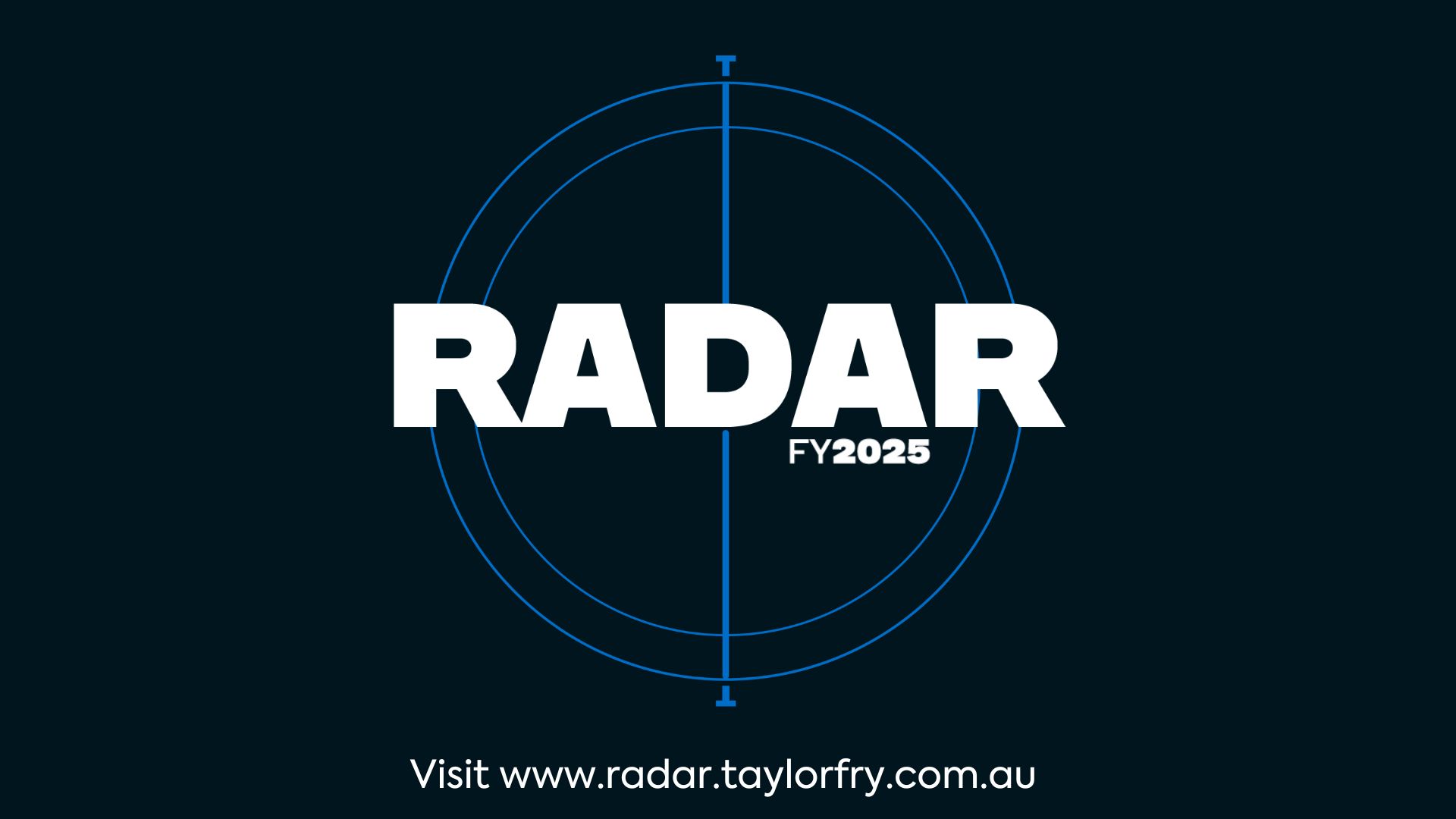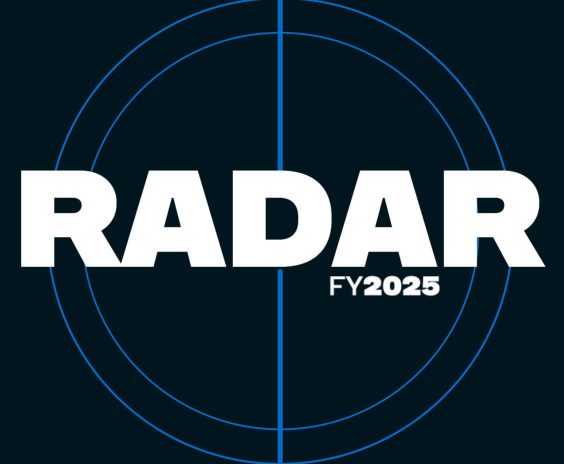RADAR FY2025 – Balance and meaningful action vital amid huge wins


What are the big themes for insurers following another year of record-breaking profits? In RADAR FY2025, Taylor Fry offers key insights on how to navigate the shifting landscape, with its greater focus on transparency and customer experience, increasing AI adoption and the ever-present risks of an evolving climate.
The general insurance industry has again posted its strongest result in more than 10 years with a profit after tax of $7.3 billion over the 12 months to 30 June 2025, according to recent data from the Australian Prudential Regulatory Authority (APRA).
While we expect the escalating figures will intensify focus on pricing practices and fairness, we stress the importance of perspective through a long-term view in our latest class-by-class analysis of the sector, RADAR FY2025.

Dive into RADAR FY2025 for a raft of expert analysis, reader-friendly charts and insightful videos covering the major happenings, emerging trends and impacts for insurers.
Here’s an overview of some of the key themes you’ll find at our RADAR FY2025 hub …
Volatility vs the long-term view
“Understandably, consumers may question the big result in a time of ongoing cost-of-living and insurance affordability pressures,” principal Scott Duncan says. “But insurance is naturally a volatile business year on year and it’s critical not to view profits solely from a one-year window. Insurers were hit particularly hard during COVID.”
This experience is reflected in the share price of the larger insurers. “The share price for Suncorp, IAG and QBE have increased at twice the rate of the broader market since 2020. Yet when we take a longer-term view, over the past 10 years, we see their share price has matched the broader market.”
Scott says this short-term volatility but steadier, long-term picture demonstrates the core role of insurance. “Insurance acts as a shock absorber for households and the broader economy to ensure the sector can restore community when times are bad.”
Opportunities for the taking
A run of positive experience over the past two years, however, provides the industry with vital opportunities to reflect and invest purposefully in better serving customers. “Previously, insurers reported years of muted returns through extreme weather events and COVID-19, with sustained losses in the householders class,” he says. “Supported by robust bottom lines, investing in customer relationships now will be the defining strategy to secure long-term trust and loyalty.”

“Investing in customer relationships now will [lead to] to long-term trust and loyalty.”
The response to Cyclone Alfred, Scott says, is a good example of a customer-first approach. “Insurers provided specialist response teams, which resulted in faster claims handling and improved communication with customers.”
The industry is also investing heavily in AI to improve underwriting and claims processes. “We’re seeing claims assistants summarising product disclosure statements and recommending next best steps for claims managers,” Scott says. “On the underwriting side, AI is being used to obtain relevant information, reducing the information collected from customers.”
What’s driving the big result
Looking at the figures, RADAR FY2025 shows direct insurers recorded a $6.7 billion profit after tax, the highest on record, driven by several factors, including catastrophic losses coming in below expectations, several years of double-digit premium increases, strong investment returns and reserve releases.
“Insurers will need to place the customer at the centre of proactive initiatives … to help foster policyholder loyalty and confidence in their insurer to do the right thing when it counts the most.”
Scott draws out householders, domestic motor and a softening market as key highlights across the underwriting result. “While householders recorded an insurance service result of $1.16 billion – the strongest in more than 10 years – APRA data shows a continued decline in risks written over 2025, with evidence that consumers who retain insurance are increasing excesses to offset cost-of-living pressures,” he says.
Signs of a softening market
With strong signs of a softening market, balancing growth and profitability objectives in the near term will be challenging. “Insurers will need to place the customer at the centre of proactive initiatives, such as focusing on a seamless acquisition journey or ensuring people are not left with inadequate cover.
“These types of moves will help to foster policyholder loyalty and confidence in their insurer to do the right thing when it counts the most.”
For reinsurers, who recorded a $0.6 billion profit after tax – the second highest in the past 10 years – the market is also softening, Scott says. “The pricing and risk selection discipline shown over the past few years will come under challenge.”
Climate and extreme weather
With access, affordability and transparency in the spotlight, climate issues, as ever, are adding extra pressure. Scott says, “The recently released National Climate Risk Assessment confirms Australians will continue to experience climate hazards with widespread, cascading and compounding impacts that will reshape risk and influence insurer profitability.”

The National Climate Risk Assessment confirms climate hazards will reshape risk and insurer profits
Additionally, new technologies and business practices relating to the energy transition will further redefine risk and profitability. “Australia has set records in 2025 in terms of battery storage growth, electric vehicle sales and installed solar power capacity, presenting relatively new risks to the industry.” More risks will emerge as the energy transition progresses, Scott adds, which increases the importance of underwriting decisions and portfolio risk monitoring across many classes of business.
Eye on the future
Scott believes pricing transparency will be high on the agenda ahead, as demonstrated by ASIC’s recent focus on how insurers communicate year-on-year changes in premiums to their customers. “Insurers can take action now to improve fairness and transparency, such as giving home insurance policyholders premium reductions for actions they take to improve a property’s resilience.”
AI adoption at pace will continue for some time, as insurers aim for quicker and more consistent outcomes for customers. “The focus is now switching to AI governance, data security and cyber risk management,” he says. “The more agile insurers will not only protect customers with appropriate guardrails but ensure fair treatment. Empathy and critical thinking are crucial here, especially for the most vulnerable customers.
“Taking time now to reflect on how to elevate customers’ experience, truly understand their needs and take proactive steps to build more trust will be critical in securing a strong foundation for the future.”
For more details, or to arrange an interview with Scott Duncan, please contact:
Elizabeth Finch | +61 473 848 888
Other articles by
Elizabeth Finch
Other articles by Elizabeth Finch
More articles

Press release – Taylor Fry announces Canberra chief for government practice
An exciting new chapter for Taylor Fry with the launch of our office in the nation's capital and the appointment of Jeremy Smith-Roberts
Read Article

Taylor Fry boosts climate expertise
Climate and financial risk specialist Dr Ramona Meyricke rejoins our ranks to lead our climate practice, as we focus on meaningful solutions
Read Article
Related articles
Related articles
More articles

RADAR FY2024 – Strongest result in more than 10 years, but insurers in regulator sights
RADAR FY2024, Taylor Fry’s annual insurance rundown in a year of solid results alongside a focus on integrity, customers and climate.
Read Article

How inflation is changing the insurer landscape
We explore the drivers and impacts of inflation on general insurance, and what insurers can do to thrive amid the pressures ahead
Read Article





